By using our website, you agree to the use of cookies as described in our Cookie Policy
WHITE SQUAW OF THE COMANCHES - TRAGIC TALE OF CYNTHIA ANN PARKER
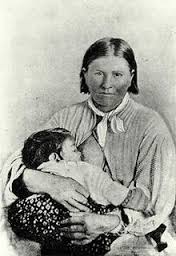
By J. Marvin Hunter
From J. Marvin Hunter’s Frontier Times Magazine, March, 1927
MORE than 90 years, 91 next May to be exact, have gone by since Cynthia Ann Parker was lost to civilization. In the days when old Fort Parker was destroyed the great empire state of Texas had a population of only 30,000. They were harassed by over 5000 hostile, redskins, chief of whom were the Caddoes and Comanches. Over 8000 semi-civilized Indians roamed the prairies, the most friendly being the Choctaws and the Chickasaws. Most of the frontier history is rapidly passing away as the old pioneers, one by one, cross the great divide. Like the lost mines of the adventurous Spaniards, vast historical wealth is irretrievably lost for the want of some one to put to record the rich reminiscences of the men and women who laid the foundations of this great land of ours.
It was my good fortune to know and talk with one of the veterans who was with the rangers that captured Quanah Parker. From him I got this story of the White Squaw and her boy—chieftain of all the Comanche tribes. I am indebted to Henry C. Puller of Brownwood, for some facts which relate to the fall of old Fort Parker. To A. W. Meredith of Wills Point, vice president of the Van Zandt County National Bank, I am grateful for some facts concerning the final resting place of Cynthia Ann Parker.
In the fall of 1833 the Parker family moved from Cole county, Illinois, to Texas. The elder Parker was a Virginian by birth, lived for a while in Georgia, but raised his family principally in old Ledford county, Tennessee. It was from this country, in 1818, that he moved to Illinois—then a country in the far west. To speak of Texas, even in the '30s, was but to mention the land beyond the setting sun. It had a far away sound. But the elder Parker and his sons dreamed of the distant land on the frontier. And they came to build their altar-fires in a howling wilderness. And what is wore strange, they came to be massacred by the Comanches whose savage braves were destined to be ruled by the blood of the very family they sought to wipe out in that terrible raid.
These pioneers built Parker's fort on the headwaters of the Navasota, then about 60 miles above the settlements. It was a block house, built of rough-hewn logs, for the protection of the people in case of an Indian raid. It was nested about a mile west of the river and about two and one-half miles northwest of the present site of Groesbeck, Texas. The fort was established in 1834. At the time the Indians made their deadly raid —May 19, 1836.—the following were in the fort: The Parkers, Plummers, Nixons, Kelloggs, Frodts, Dwights, and the Faulkenburgs, Mrs. Duty, Silas Bates, a Mr. Lunn and Abram Anglin—representing 22 adults and some 15 or more children. They were all in the fort on the night of the 18th - the night before the raid. Mr. Fuller states that local legend and history unite in saying that at least 500 Comanche Indians attacked the fort and killed practically every person there, a few managing to make their escape. The death list consisted of Elder John Parker, Silas Parker, Ben Parker, Sam Parker and Robert Frodt. The people who were dangerously wounded were Mrs. John Parker, Granny Parker and a Mrs. Duty. After burning the fort the Indians carried the following away as captives: Mrs. Rachel Plummer, daughter of James Parker, and her little son, James Plummer, 2 years old; Mrs. Elizabeth Kellogg, Cynthia Ann Parker, 9 years old, and her little brother, John Parker, children of Silas Parker.
It was 9 o'clock on the morning of May 19, 1836—the tragic day, like so many others that have made Texas a soil redeemed by her martyrs' blood. What would the mighty history of the great southwest be were it not for these bloody chapters that tell of the fall of forts and recount the heroism on such fields as Goliad and San Jacinto! To tell the story of these battles and our Alamo around our firesides is but to teach our sons they are born of Spartan blood.
James W. Parker, Nixon, the Faulkenburgs, Bates and Anglin, were off to the fields some distance in the Navasota bottoms. Suddenly, as if rising from the very dust, hundreds of Indians were seen riding towards the fort. They came within three hundred yards and, having halted, raised a white flag. Benjamin Parker went out to treat with them. He came back and said he believed the Indians intended to fight, but that he would treat with them again. He went —but he never returned. Pandemonium set in. Amidst savage war-whoops and blood-curdling screeches, the whole band charged the fort, now defended by only two men. Execution was speedy and horrible. It was the common story of an Indian massacre.
From this sad rehearsal let us turn away to follow the fortunes of those few who lived even to be carried into captivity. For there was a mother who was compelled to lift her nine-year-old, daughter Cynthia Ann, and her brother, John, up behind a warrior. The Indian turned his pony's head to the faraway Comanche land. As he faded from view, Cynthia Ann was torn from her mother's arms, only some day to rock on her bosom a baby born to rule the warriors that stole his mother in the years of the long ago.
Mrs. Kellogg was taken captive and fell into the hands of the Keechies. Six months thereafter some Delawares bought her from these Indians for $150. They carried her to Nacogdoches, where General Sam Houston paid them a ransom of $150—all they paid and all they asked. One of the most revolting crimes at the fall of the fort was the murder of Elder Parker. Having surrounded him with his own family, they stripped, tomahawked and scalped him before their eyes. On the way to Nacogdoches one of Mrs. Kellogg's rescuers slightly disabled a skulking Indian. She instantly recognized him as the slayer of the Elder Parker. Without judge, charge or jury, the redskin was given quick passage to his happy hunting grounds.
William Donoho, a big-hearted American merchant in Santa Fe, New Mexico, aided by some traders on the old Santa Fe Trail, redeemed Mrs. Rachel Plummer from an unspeakably brutal capacity. These traders found her in the wild fastnesses of the Rocky mountains so far north of Santa Fe that it took 17 days to reach that frontier town. After a year and six months of awful captivity she was given a royal reception. In a short while Mr. Donoho and his good wife carried her to her brother-in-law, a Mr. Nixon of Independence. Missouri. In 1858 Mr. Nixon took Mrs. Plummer to her father's house. Twenty-one months of captivity had worn away. During all this while she did not know the fate of her baby from whom she was separated, and the child born six months afterward was cruelly murdered in her presence. There is a remarkable thing about Mrs. Plummer's history. She was born on the 19th, married on the 19th, captured on the 19th, ransomed on the 19th, reached Independence on the 19th, and died on the 19th' of the month. Her baby, lost on the fall of Fort Parker, was ransomed and carried to Fort Gibson late in the year of 1842. His grandfather reached home with him in February, 1843. He grew to be one of the most respected citizens of Anderson county. Texas. This leaves Cynthia Ann and and John Parker, who were held in captivity by different tribes—the girl by the Comanches, and the boy probably by the Kiowas.
John Parker reached manhood and became a noted warrior. His tribe planned a campaign beyond the Rio Grande. On the raid John captured a beautiful, dark-eyed senorita and made her his wife. While yet a captive she fell madly in love with him, as only a Spanish maiden can. John became desperately ill with the smallpox. The whole cowardly tribe fled in consternation, leaving him to die alone—but they took his senorita. The Spanish girl was haunted by visions of her suffering warrior-lover. Not counting danger nor distance she escaped and fled to his side. He got well— and, in perfect disgust, quit his tribe forever to make his home with the people of his faithful captive-wife. In all the romance of our early history there is no page quite so beautiful as this. It is the story of love's conquest over the heart of an American pioneer schooled in all the savage discipline of the Comanches and the Kiowas—the wild Arabs of the New World.
At the fall of Fort Parker, on the morning of May 19th, 1836, Mrs Parker was forced to lift her little nine-year-old daughter, Cynthia Ann, up behind a heartless savage, as has been recited before. He rode away to the hunting grounds of the wild Comanches. Twenty-four years and seven months rolled by until her recapture, December 18, 1860. in other words, Cynthia Ann was 34 years old when seen again. No word was had from her in this awful lapse of a quarter of a century. Long, long before her recovery, she had been given up as one dead. But we must know some events that strangely brought about the purely accidental discovery of Cynthia Ann, by which she was once more restored to a civilization from which she had long since been weaned.
It was now 1858, Major Earle Van Dorn, with some United States dragoons, was preparing to leave Fort Belknap. The famous Van Dorn campaign against all the hostile tribes was now opening.
Sul Ross, afterward a household word in Texas, was only 18 years of age and on his college vacation, he took command of 135 friendly Indians—Wacoes, Tehuacanoes, Toncahuas and Caddoes. Van Dorn readily accepted their services when tendered, and they entered on the celebrated campaign. Ross, and his command took the lead. Van Dorn with his dragoons and supply train brought up the rear. When Ross reached the Wichita mountains he sent a trusty Waco and a Tehuacano to scout the Wichita village, 75 miles east of the Wichita river. He hoped to find the camp of the savage Comanches whose raid had worked such awful havoc on old Fort Parker. The scouts were amazed to find that Buffalo Hump and his band of Comanches were in the village trading and gambling with the Wichitas. When night fell they stole two Comanche ponies and hurriedly carried word to Sul Ross. Buffalo Hump was the one chief among all the hostile tribes against whom Van Dorn's expedition was directed. Ross had a hard time to make Van Dorn trust the word of his scouts. At last he persuaded Van Dorn to make a forced march with his dragoons against the village.
The sun was just rising on the first day of October. Van Dorn, with his dragoons, and Sul Ross, with his 135 redskins, struck the Wichita village like thunderbolts out of a clear sky. Buffalo Hump and his powerful band were almost wiped off the face of the earth in the first assault. Van Dorn's command fought like demons, for they saw afresh the scenes of old Fort Parker. Many prisoners were taken, among them being "Lizzie." She was a white girl for whom not a solitary relative was ever found, nor a single soul who could give the faintest recognition. Sul Ross adopted, reared and educated her with all the tenderness of a father. She reached a graceful womanhood, married and died among the flowers and sweet perfumes of southern California.
The next great epoch in the frontier history of the southwest was the battle of Pease river, where, after the dragging years of a quarter of a century had gone by, Cynthia Ann Parker lifts her form above the horizon of a civilization from which she had long since faded away.
When the leaves began to fall in 1860, a powerful band of Comanches made a terrible raid through Parker and adjacent counties. Under the leadership of Chief Nocona they spread ruin and disaster along their war trail. Sul Ross, now a captain of the Texas Rangers, 20 dragoons from the regular army, and 70 citizens out of Palo Pinto county, took the Indians by complete surprise at their camp near Cedar mountains, on the headwaters of Pease river. They were packing their horses preparatory to the desertion of camp when Sul Ross and his command swept down upon them like a whirlwind. In less than half an hour he had killed or captured everything in sight except Nocona, who, with an Indian behind him, broke for the mountains six miles away. On a swift pony, the chief's squaw, with her baby in her arms, rode beside him. Ross and Killiher pursued them like devils. Ross soon came within range and killed the Indian riding behind Nocona. It proved to be a woman, hidden under a great buffalo robe. In her fall she unhorsed the chief by a death grip. A deadly combat was drawn between Sul Ross and the Comanche chieftain. At last a shot from his revolver broke the Indian's right arm and he could no longer pull the bowstring. The ranger then shot him through the body. Walking deliberately to a tree, he leaned against it and began to sing the death-chant—the only privilege a redskin ever begs of his foe. Rangers having arrived, Nocona was commanded to surrender. He answered by a vicious thrust with his lance. A rifle ball brought the death song to an abrupt close. And Nocona's lance, war bonnet and shield were hung among the trophies in the old state capitol.
The squaw and the child captured by Lieutenant Killiher proved to be Nocona's. The trained frontiersmen at once discovered that she was a white woman bronzed from the winds and the suns of the plains, that her eyes were blue and that she was weeping. They told her not to cry, that they would not harm her. For 25 years an unbroken search had been made for the missing girl of old Fort Parker. Somehow, it dawned upon them that they had found Cynthia Ann Parker in the fallen chieftain's wife. Under like conditions, it is said that the Indian neither laughs nor weeps. He is steely indifferent to any emotion that stirs the white man's breast. But she said she was crying not for her self, but for her two boys, as she thought, slain in the battle. She was carried to the settlements and readily identified as the long-lost Cynthia Ann Parker.
A quarter of a century in the wigwams of the Comanches had made her as perfect an Indian as she had been born around the campfires. She had forgotten every English word. Civilization was so unbearable to her that she sought every chance to escape. A close watch had to be kept upon her for days and days. Slowly the recollection of childhood scenes stole upon her savage sense. At last she became contented in her brother's house in Anderson county, Texas. While she, in some measure, adjusted herself to the ways of civilization yet so long as she lived Cynthia Ann Parker kept up her Comanche worship of the Great Spirit.
Her little "Prairie Flower"—the babe that rode with its mother alongside Nocona's fatal flight—died. In less than two years Cynthia Ann Parker was laid beneath the flowers that bloomed on the grave of her little barbarian, Mr. Meredith of Wills Point, Texas; a fellow citizen in those distant days, related this to me: "Subsequent to Cynthia Ann's capture by Sul Ross's brigade, she lived in the lower part of Van Zandt county, Texas, in 1861-62, with her brother who moved from there to Anderson county where she died. Afterwards the United States government made an appropriation to have her remains moved to Oklahoma and buried beside her son's body—Chief Quanah Parker.
Her two sons did not fall in the battle of Pease river. Several years afterward one died on the great plains of Texas. The other son lived to become the great Comanche chief—Quanah Parker. He was born near Wichita Falls, in 1854. He ruled his people on their reservation in the old Indian Territory, now the progressive State of Oklahoma. He spoke the English tongue, was quite advanced in civilization and owned a well-stocked ranch. Mr. Henry C. Fuller writes:
"Quanah Parker died at his home three miles northwest of Cache, Okla., in the spring of 1911. A daughter, Esther, and two sons also sleep by his side. The eldest daughter of Quanah Parker, Neda Parker Birdsong, bought the old home place and is now living there. The house is a large 1-room frame building, built about 30 years ago, by S. B. Burnett of Fort Worth, who had a large tract of grazing land in that immediate section leased at that time, and who was for many years a close personal friend of Quanah Parker. The names and addresses of the sons and daughters of Quanah Parker are: Mrs. Edward Clark, Lawton, Okla., Baldwin Parker, Indiahoma, Okla., Mrs. Bessie Parker Asenap, Indiahoma, Okla., and White Parker, Lawton, Okla."
Thus ends the tragic story of a girl who made the circuit of all the savage west. She died an alien among her own. She forever longed for the wild freedom of the Estacadoes. She dreamed of an Indian lover brave enough to sing his death song. She and her little "Prairie Flower" —her little barbarian— sleep side by side, dreaming of the moonlit plains and the gurgling streams.
_____________________________________
_____________________________________
‹ Back




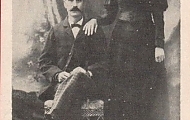
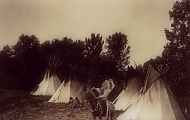
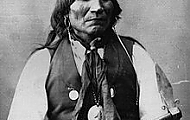
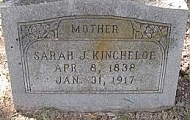


Comments